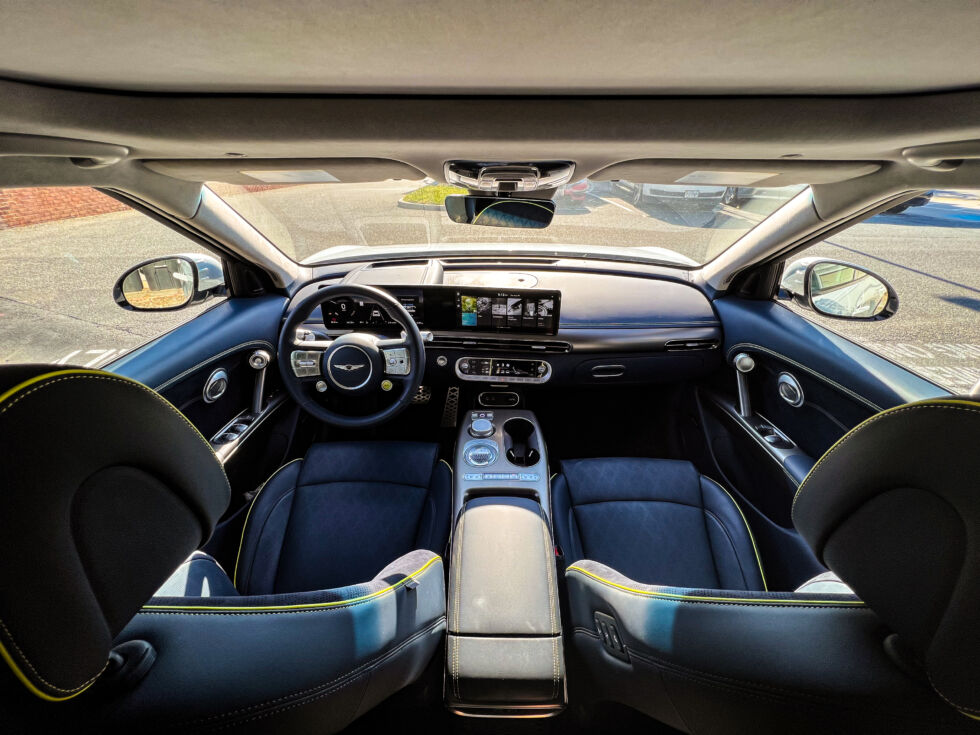The 2023 Genesis GV60 is a strong contender for EV of the year

The rise of the Korean automotive industry over the past few years has been fascinating to watch. Years of lackluster products and difficult dealerships still carry some stigma, but the truth is that we haven’t driven a bad new car from Hyundai Motor Group in some time. That’s particularly true when it comes to its electric vehicles, especially those built using the company’s latest platform, called E-GMP.
Kia and Hyundai have each delivered their first E-GMP EVs, and both have seriously impressed. Now it’s time for Genesis to apply its first take on automotive luxury as applied to the E-GMP platform with this electric crossover, the GV60.
It builds on what we already knew to be a competent skeleton, adding a hefty dose of style, some intriguing convenience tech that might not be reliable enough just yet, and in the case of the all-wheel drive Performance version we tested, more than enough power. It’s even what currently passes for reasonably priced in terms of specification, finish, and the generally over-exuberant state of the EV market, starting at $58,890.
In fact, it might just be my favorite EV I’ve driven this year.
Genesis chose a relatively compact crossover shape for the GV60, at just 177.8 inches (4,515 mm) long, 74.4 inches (1,890 mm) wide, and 62.2 inches (1,580 mm) tall—smaller than both the Hyundai Ioniq 5 and Kia EV6. But a 114.2-inch (2,900 mm) wheelbase means there’s ample interior volume, even if the vehicle doesn’t quite fill a standard parking space.

Between those axles lives a 77.4 kWh lithium-ion battery pack that runs at 800 V (as opposed to the more usual 400 V most EVs use). The GV60 Advanced AWD pairs this pack with a 100-hp (74-kW) permanent magnet front motor and a 215-hp (160-kW) permanent magnet rear motor, with a combined output of 314 hp (234 kW) and a punchy 446 lb-ft (605 Nm) of torque. Its 20-inch wheels give this version an EPA range estimate of 248 miles (400 km).
We tested the GV60 Performance AWD, which adds electronically controlled suspension, an electronic limited slip differential, bigger front brakes, and some interior upgrades like heated rear seats, but importantly an uprated front drive unit at 215 hp (160 kW). This spec GV60 can’t supply maximum power to both drive units at the same time; instead, it’s rated at 429 hp (320 kW) in sports mode (with the same torque output as the Advanced AWD) or an attention-getting 483 hp and 516 lb-ft (700 Nm) if you push the little boost button that lives on the steering wheel.
If you do this at a stoplight and then give the throttle a little push when the light turns green, the GV60 will chirp all four 21-inch wheels before giving a shimmy of its hips as you launch down the road. On a long and empty road in the middle of nowhere, you’ll notice acceleration tail off as you start to reach freeway speeds; in the city, the responsible thing to do is lift your foot when you hit 25 mph (40 km/h) and coast to the next light with a serene smile on your face.

https://arstechnica.com/?p=1877343